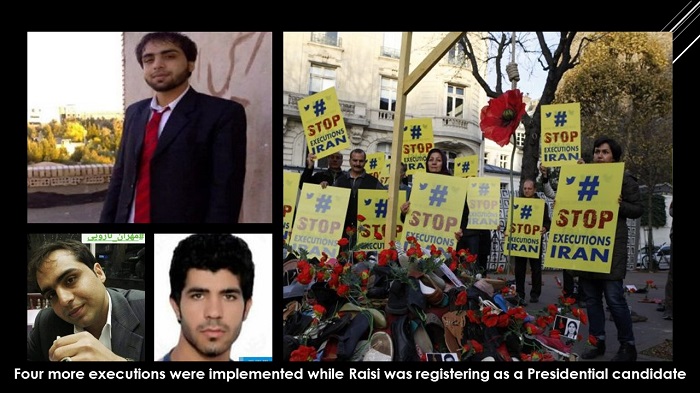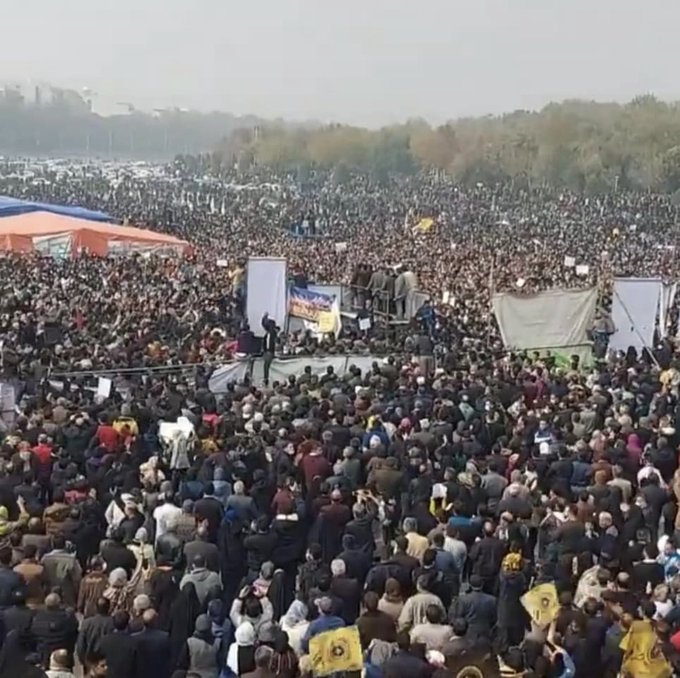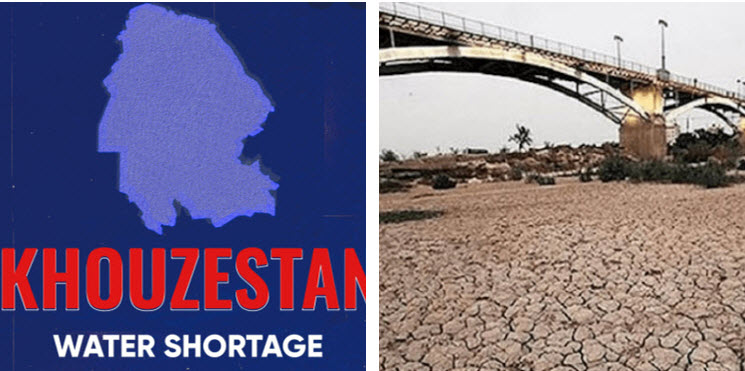
(NCRI) and (PMOI / MEK Iran): Professor Javaid Rehman gave an overview of “In the Islamic Republic of Iran, the death penalty continues to be used at an alarming rate.
“The overall picture of the human rights situation in Iran remains grim,” the Special Rapporteur on the state of human rights in Iran told the UN General Assembly’s Third Committee on October 25. Professor, offered an overview of some of the most significant concerns regarding Iran’s human rights situation, with a focus on concerns about the legal foundation and application of the death penalty.
Iran killed 28 prisoners in November 2021
“In the Islamic Republic of Iran, the death penalty continues to be used at an alarming rate,” Prof. Rehman said, adding that “the lack of official statistics and transparency surrounding executions means that this practice escapes scrutiny, resulting in serious abuses and preventing accountability.”
According to sources, at least 28 prisoners were killed in various Iranian jails in November 2021. Two ladies and a child offender were among those executed. The executed convicts range in age from 23 to 56 years old. Kerman Central, Central Mashhad, Central Zahedan, Central Isfahan, Gohardasht, Central Yasuj, Central Qazvin, Central Qom, Central Rasht, Central Shiraz, and Ghezel Hesar were all places where people were executed.” The presidential elections in June of this year emphasized this point.

(PMOI / MEK Iran) and (NCRI): “The situation is exacerbated by the fact that people accused of committing serious human rights violations continue to hold powerful positions in government, including at the highest levels.
The executed convicts are in age from 23 to 56 years old
Mr. Rehman went on to remark that the use of lethal force against unarmed protestors is “characteristic of the authorities’ approach to the exercise of the right to peaceful assembly.”
At least 385 people have been charged and arrested for taking part in the Isfahan uprising, publishing and sending photos of farmer protests, attending gatherings, collaborating with opposition parties, publishing critical material about the regime’s Friday prayer leader of Dargaz, propaganda against the regime, and collaborating with PJAK and sending videos of social problems.
At least 300 of these detentions are linked to the uprising in Isfahan. Of fact, this figure is an estimate, and the true number of people arrested during the rebellion is thought to be much higher.

(PMOI / MEK Iran) and (NCRI): At least 300 of these detentions are linked to the uprising in Isfahan. Of fact, this figure is an estimate, and the true number of people arrested during the rebellion is thought to be much higher.
Border Regiment and IRGC killed a number of civilians
Fuel porting, publishing unusual images and videos on the Internet contrary to the regime’s ordered culture, clashes with law enforcement and security officers, running Instagram dating pages, publishing norm-breaking videos under the pretext of happiness on the Internet, and publishing clothing modeling images on the internet were among the 39 people charged and arrested this month.
In addition, Border Regiment, police, and IRGC officers shot and killed a number of civilians and cargo porters:
Naval officers shot and killed Ahmad Safari, 32, while he was fishing in Hur al-Azim Lagoon.
Murad Hut and his son-in-law Khodadad Hut, both Baluch residents, were slain along the Lirdaf-Jask axis by direct fire from Jask intelligence personnel.

(PMOI / MEK Iran) and (NCRI): Border Regiment, police, and IRGC officers shot and killed a number of civilians and cargo porters. Naval officers shot and killed Ahmad Safari, 32, while he was fishing in Hur al-Azim Lagoon.
Nine people were murdered, for water shortage
Police shot and killed a businessman called Farhad Zandi, who was married and had a young child, on the Sanandaj-Dehgolan route without warning and on suspicion of transporting illicit goods in his automobile. Inspections revealed that his car was empty and that he was not transporting any cargo.
“In July of this year, we witnessed the use of lethal force against unarmed people in a desperate situation protesting a severe lack of a basic right – the right to water – in the province of Khuzestan.” At least nine people were murdered, including one child, as a result of the authorities’ use of live bullets, and a large number were injured. Monitoring the incident was difficult because the internet was down and access to information was restricted. “The use of lethal force against protesters in Khuzestan is the latest in a long line of similar incidents, including the iconic case during the nationwide protests in 2019, which resulted in at least 304 deaths and continues to be marked by impunity.”

(NCRI) and (PMOI / MEK Iran): “In July of this year, we witnessed the use of lethal force against unarmed people in a desperate situation protesting a severe lack of a basic right – the right to water – in the province of Khuzestan.
MEK Iran (follow us on Twitter and Facebook)
and follow Maryam Rajavi’s on her site Twitter & Facebook
and follow NCRI (Twitter & Facebook) and People’s Mojahedin Organization of Iran – MEK IRAN – YouTube

